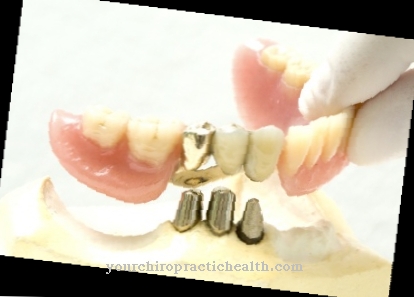The physical therapy is a form of treatment that is mainly given to people who are affected by limitations of the musculoskeletal system. In Germany, physiotherapy was still officially known as physiotherapy designated.
What is Physiotherapy?

A physical therapy is usually carried out by specially trained specialists, so-called physiotherapists. As a profession, physiotherapy falls into the group of health professions.
A treating physician usually decides whether a patient needs physiotherapy. The doctor will then issue a corresponding prescription.
Regardless of a certified medical indication, physiotherapy can also be used privately. The therapy plan for an individual physiotherapy is usually based on the complaints that are expressed by the patient and on the observations made by a physiotherapist during the course of treatment.
Function, effect & goals
In the treatment of patients it covers physical therapy different facets. In the context of physiotherapy, not only the treatment of physical complaints is taken into account, but also increasing the patient's self-motivation and imparting knowledge that can be helpful to the patient with their individual complaints.
Physiotherapy can be used for acute complaints as well as for prevention or as part of rehabilitation measures. The range of medical areas in which physiotherapy is used is also wide. Usually, the physiotherapy is used by patients from the field of orthopedics. The majority of these patients have back problems.
Here, physiotherapists provide the patient with helpful exercises and movement patterns, among other things, and train them together. Physiotherapy is also used in the orthopedic field, for example, for mobilization after bone fractures, after the use of artificial joints, after joint diseases or even after amputations.
Physiotherapy in the orthopedic field helps to maintain physical mobility, among other things for diseases such as osteoarthritis (joint wear) or inflammatory joint diseases such as rheumatism. Physiotherapy is also used in the field of neurology. Patients affected by diseases such as Parkinson's or multiple sclerosis benefit from this.
Depending on the individual symptoms, the goals of a corresponding physiotherapy are to maintain various everyday skills such as grasping, standing or walking. Targeted physiotherapy can, for example, contribute to a gradual recovery of motor skills that were impaired by the stroke after a stroke.
Physiotherapy is also used to treat children who suffer from developmental disorders or to relieve symptoms of respiratory diseases. For example, breathing techniques are learned here. And finally, physiotherapy is also used for certain cardiovascular diseases, gastrointestinal diseases and in the broad field of psychiatry. In the latter case, physiotherapy can contribute to a more active everyday life.
You can find your medication here
➔ Medicines against tension and muscle painSide effects & dangers

So from one physical therapy There are no dangers or side effects, it is important to have the treatment plan drawn up by a competent physiotherapist. Among other things, it is important that the loads that are exerted on the patient's body through physiotherapy measures also correspond to the patient's capacities.
If this is not the case, then after physiotherapy measures, for example, muscle soreness can occur. If appropriate precautions in physiotherapy are not observed, a person with an unstable posture can also suffer fall injuries while performing gymnastic exercises.
Bruising can also be the result of improperly performed physiotherapy measures. Damage can also occur, for example, if a patient shows little personal responsibility after a bone injury and puts more stress on the injured body area than was conveyed to him during physiotherapy. Among other things, this can lead to an exacerbation of the bone damage.
Side effects can also result if massage techniques are used as part of physiotherapy, for example. If the body is not adequately prepared for the massage or if the massage is improperly performed, painful tension can result.












.jpg)



.jpg)










.jpg)
